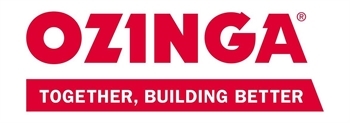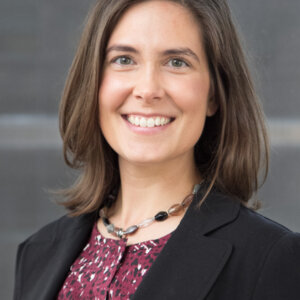Our rivers are the backbone for new opportunities and civic pride
The waterways flowing through much of the Chicago metropolitan area and eventually to the Gulf of Mexico are more than just rivers. They are canvasses for painting a brighter future for our city and the millions of Chicagoans and suburban neighbors.
And not just a future benefitting a select few. There are vast opportunities along our rivers, particularly in neighborhoods traditionally neglected, industrial corridors ripe for repositioning and in diverse natural environments on land and water.
At the Metropolitan Planning Council’s (MPC) Roundtable, “Transforming Chicago’s Great Rivers,” held on Sept. 29, the room was at maximum capacity when 120 people joined the conversation around collectively tapping our rivers’ potential in order to reap myriad benefits and instill hope in a city eager for change.
The task at hand for Chicago and its suburban neighbors is to involve even more residents, business owners, civic organizations, educators, boat operators, bird watchers, kayakers…the list goes on.
That’s the main premise behind the work of Great Rivers Chicago, the effort led by MPC to reimagine the future of Chicago’s three rivers (yes, three!): the Calumet, Chicago and Des Plaines. If you need a visual of how these water bodies flow throughout our city and beyond into suburban communities, check out this interactive map.
After an 18-month process in partnership with Mayor Emanuel and his administration, Friends of the Chicago River, the Chicago Metropolitan Agency for Planning and thousands of Chicagoans, Our Great Rivers was released in August as the first-ever forward-looking, unifying vision for the future of our rivers. Director at MPC and project lead Josh Ellis gave a snapshot of the vision document during the roundtable, including some of the recommended actions by 2020, 2030 and 2040 for the public and government to take. My personal favorites: real-time water quality information by 2020, more local tourism and jobs along our rivers by 2030 and thriving river ecosystems by 2040.
The roundtable was a timely occasion to hear what Our Great Rivers meant to some of the key players behind the effort and what they saw as critical next steps to bringing the vision into reality. The event panelists included executive director of the Little Village Environmental Justice Organization Kim Wasserman-Nieto, director of watershed planning at Friends of the Chicago River John Quail, superintendent of the Forest Preserve of Cook County Arnold Randall and City of Chicago Dept. of Planning and Development Commissioner David Reifman, all of whom had been extensively involved in the Great Rivers Chicago process to date.
Support Our Great Rivers! We gave out cool river-themed t-shirt when supporters donated at least $25 to the cause.

A clear theme across the panelists’ remarks was the range of different opportunities possible as we think about the rivers’ future. To start, Arnold Randall highlighted the new recreational opportunities right here in the city that will be possible by furthering public access, outdoor programming and investments along our rivers like boat launches and continuous riverfront trail—some of the recommendations in Our Great Rivers to create truly inviting rivers.
Citing the Next Century Conservation Plan as an example of how the Forest Preserves of Cook County is working toward getting more people excited and motivated to connect to our great outdoors right here at home, Randall is hopeful that all Chicagoans and suburban neighbors will be able to enjoy our wonderful natural assets—like our rivers and forest preserves—that we already have in our backyard.
Beyond recreational opportunities, for some stretches of Chicago’s rivers—namely along the North and South Branches of the Chicago River and the Calumet River—different types of economic development have existed for decades. Commissioner Reifman remarked how there are all kinds of development opportunities, particularly in the city’s southern riverfronts, as we look toward the future of our historically “working rivers.”
An effort led by the Dept. of Planning and Development is currently underway to reexamine the land use policies for the city’s industrial corridor system, starting with three corridors along the rivers: the North Branch, Pilsen and Little Village. This is the kind of innovative thinking called for in Our Great Rivers to create truly productive rivers so that we can work to retain existing businesses that rely on the water and attract new types of entrepreneurs and jobs, all while preserving the integrity of the water and culture of surrounding communities.
There are also myriad environmental opportunities for the rivers of tomorrow, like improving water quality, which John Quail reminded the audience has vastly improved already thanks to multiple policy milestones over the years, including revised water use designations and standards accepted by the Illinois Pollution Control Board in 2015. Quail noted that thedisinfection technology now in place at the Metropolitan Water Reclamation District’s O’Brien and Calumet plants is yet another example of the strides being made toward cleaner waterways.
Water quality improvements and also restoring the environment, creating more habitat for fish and wildlife, and aggressively combatting the spread of invasive species are all opportunities cited in Our Great Rivers to achieve truly living rivers come 2040.
With better water quality and a shifted mental perception that our rivers are becoming cleaner, safer and inviting places to interact with, more and more users of all kinds will be flocking to our rivers—and that’s certainly the hope for the future articulated in the vision.
The task at hand for Chicago and its suburban neighbors is to involve even more residents, business owners, civic organizations, educators, boat operators, bird watchers, kayakers…the list goes on. We need as many of the current and future users as possible engaged in realizing the future that they want to see for the rivers.
Kim Wasserman-Nieto summarized what we therefore need to do moving forward: more planning! It was a significant message, meant to instill strategic thinking and careful next steps as we articulate how to bring to life the range of opportunities for the rivers that the future holds.
Our Great Rivers was developed on the foundation of the most robust community engagement process in MPC’s 82-year history, with more than 6,000 stakeholders sharing what future opportunities they want to enjoy along the rivers. According to Kim, it will be extremely important to advance with intentional, in-depth planning by asking questions like “How do communities relate to the river?” and “Where does the river play a part in the environmental, jobs and economic development, and social improvements Chicagoans desire?”
It certainly is time for Chicago to think differently about our future. Our Great Rivers has outlined how we collectively aspire to coexist with inviting, productive and living rivers, providing everyone with opportunities to find or create their own place, their own experience and their own community on our rivers.
We have an entire system of more than 150 miles of riverfront running through our city as our canvass. As more and more Chicagoans take advantage of opportunities right here in our hometown, we can begin to see our city with hopeful eyes. From that place of strengthened civic pride, the change we are yearning for become within reach, and our rivers become the backbone for how we’re going to get there together.
MPC thanks Ozinga and R2 Companies for their generous sponsorship of this event.

